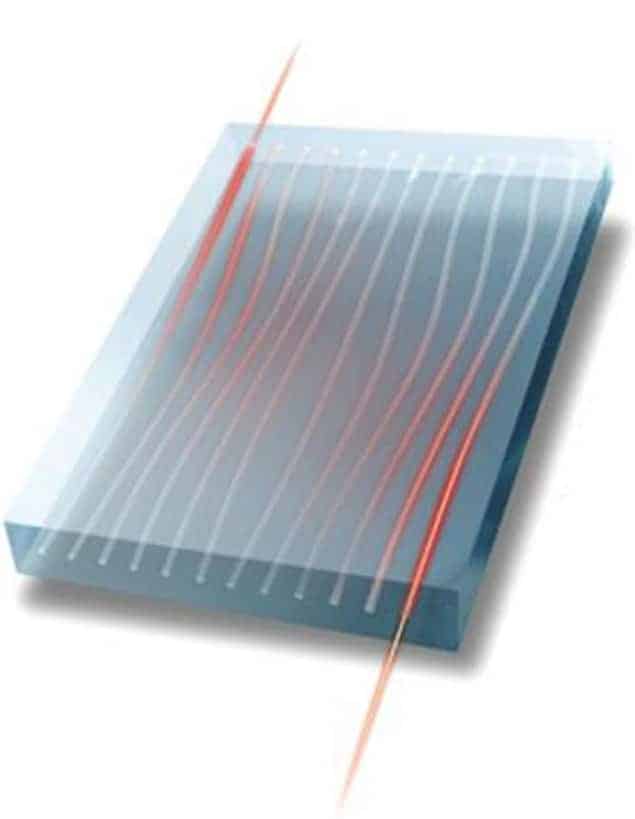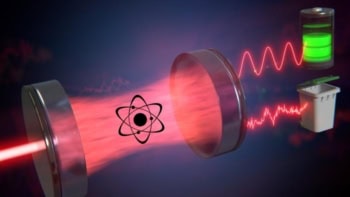
A surprising connection between quasicrystals and topological insulators has been demonstrated in the lab by physicists in Israel. The team has studied how light propagates through a 1D quasicrystal and found that it is similar to how electrons conduct in a 2D topological insulator. The surprising result suggests that quasicrystals could be used to create systems with dimensionality higher than 3D – something that could be useful both in studying fundamental physics and creating materials with new and useful properties.
A topological insulator is a material that is an insulator in the bulk but for reasons related to geometry is a conductor on its surface or edge. Perhaps the most famous example of a topological insulator is the integer quantum Hall effect (IQHE), whereby electrons on the edges of a 2D ribbon conduct electricity but no conduction occurs in the middle (or bulk) of the ribbon. Now Yaacov Kraus, Oded Zilberberg and colleagues at Israel’s Weizmann Institute of Science have shown that a similar 2D topological effect can be seen in how light propagates in a 1D quasicrystal – suggesting that the quasicrystal actually has 2D topology.
The team performed experiments using 2D arrays of parallel waveguides. The separation between the waveguides is set so that some of the light propagating down one waveguide can leak into an adjacent waveguide, then into the next and so forth (see figure). If the movement of the light in the direction perpendicular to the waveguides is considered, it is similar to an electron moving through a 1D lattice with lattice spacing equal to the distance between the waveguides. The fact that the light “hops” from one waveguide to the next makes the system analogous to a model of electron conduction.
Sticking to the edge
In one experiment the team created a system in which the optical properties of the waveguides – and the spacing between them – are not identical. Instead, the structure is actually a quasicrystal described by the Aubry–André (AA) model. When a pulse of light is fired into a waveguide in the centre of the quasicrystal it spreads out to adjacent waveguides as it propagates through. However, when a pulse is fired at the waveguide at the left edge of the quasicrystal all the light remains in that channel, which the team say is a “clear signature of the existence of a localized boundary state”.
In the next experiment the team focused on an effect called “adiabatic pumping”, whereby light is transferred from one edge of a device to the other – a topological effect that is seen in materials that exhibit the IQHE. To see this pumping the team created a second quasicrystal based on a different version of the AA model. When a light pulse is introduced to a waveguide at the edge of the device the light migrates across the device with all of it ending up in the waveguide at the opposite edge (see figure). So once again, a 1D quasicrystal seems to behave in the same way as a system with 2D topology.
The physicists explain this curious behaviour by pointing out that the AA model contains a parameter that provides a mathematical description of the quasicrystal. This, they argue, can be thought of as an extra dimension – effectively boosting the topology to 2D.
According to Kraus, this discovery is exciting because it means that systems with topologies beyond 3D could be created using quasicrystals – something that would be a boon for fundamental physics. Also, it could be possible to use quasicrystals to create practical devices based on materials with specific topologies.
The team is now looking at how to create a 2D quasicrystal with 4D topology.
The research is described in Physical Review Letters.



